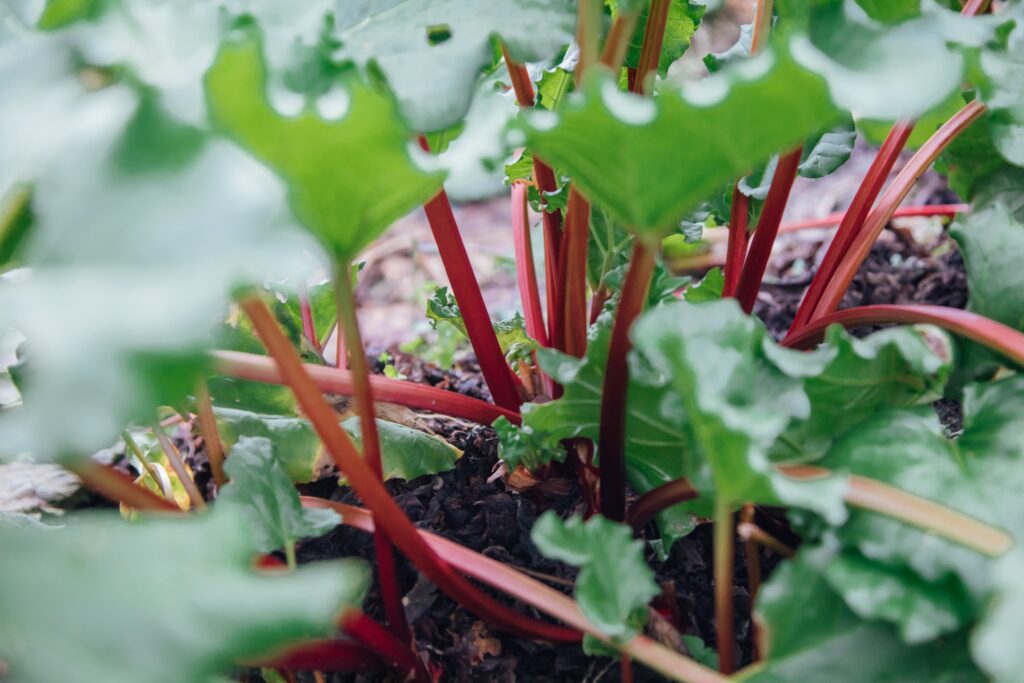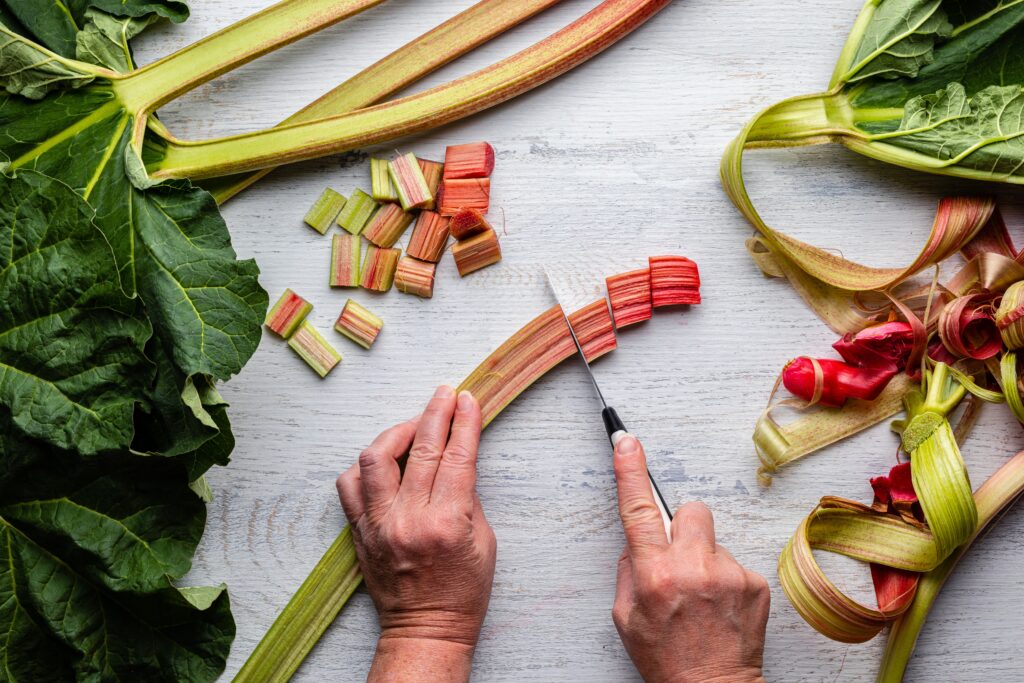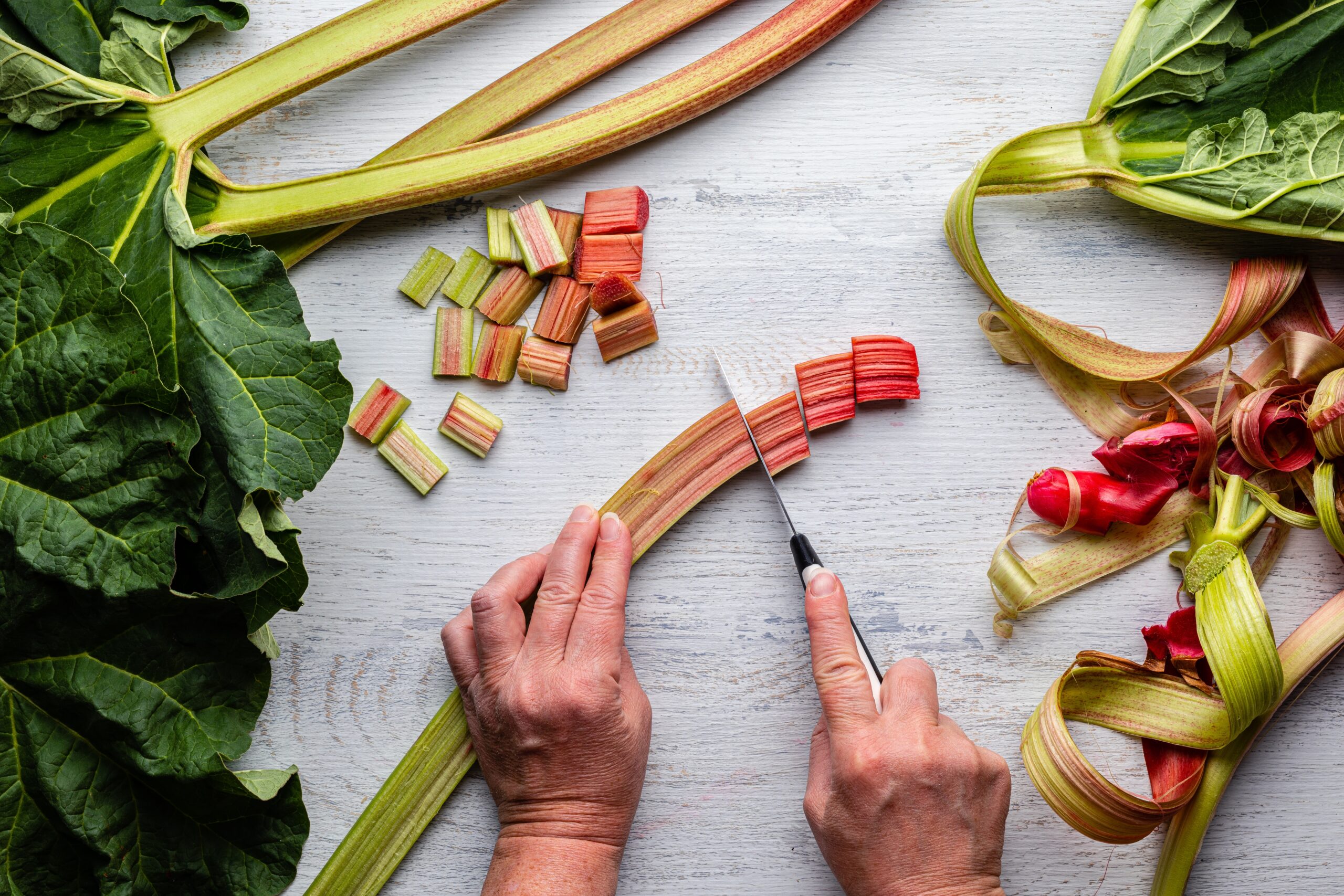Some of the links on this page are affiliate links, which means that Buzzy Kitchen earns commission from purchases made – at absolutely no extra cost to you. Thank you so much for supporting Buzzy Kitchen!
I’m going to go assume that you’re currently having a conversation with someone, about rhubarb, and they’ve just told you that rhubarb isn’t a fruit: it’s a vegetable. You have probably disagreed and gone online to search, “Is rhubarb a fruit or a vegetable?” to prove your friend/relative/partner/colleague wrong.
Am I right or wrong about that little scenario? Honestly, I’d love to know.
You can finally put the debate to bed, if the scenario I’ve just described has played out in your life. I’ve got all the answers you need to know… and you might just be surprised by them.
So, Is Rhubarb a Fruit or a Vegetable?
We use it in much the same way that we would use a fruit – in desserts like strudels and crumbles, and also in jams – but the humble rhubarb plant, that some of you probably have growing away happily in your back garden, is not a fruit.
Rhubarb is actually a vegetable.
(I’m so sorry if you were the one in the wrong in the aforementioned scenario.)
Are Rhubarb and Celery Related? (Surely not?!)
Despite their similarities, rhubarb and celery are not related.
When you look at rhubarb, and then look at celery, you might be able to spot some similarities, though.
You eat the petioles of celery, which is the stalk of a plant that connects the leaves to the main stem.
You also eat the petioles of rhubarb – the part of the plant that connects the big leaves to the stem.
Rhubarb is related to a few other plants, but you likely wouldn’t guess them without some online assistance. (I didn’t, before researching this subject!)
Being part of the polygonaceae family, rhubarb is actually linked to buckwheat, which is often used to make flour; and sorrel, which is usually added to salads.

Photo by kaori nohara on Unsplash
Are Rhubarb Leaves Poisonous?
While we’re on the subject of rhubarb myths and rumours, let’s have a little chat about whether or not rhubarb leaves are poisonous.
This one isn’t actually a myth, sadly.
Rhubarb leaves are poisonous…
… and they have the potential to not only make people (and other animals) quite unwell, but also to kill them.
The leaves of rhubarb are problematic in terms of concentrations of toxic compounds. The stalk contains a lesser amount, which is why we eat the stalks of rhubarb and not the leaves. This wasn’t always the case, however.
Back in World War I, rhubarb leaves were actually recommended as a healthy source of nutrition, which led to poisoning and eventual fatalities. This was accidental, of course; but it did still make quite a lot of people rather unwell.
The leaves are more dangerous at certain times of the year, particularly after a cold spell. It is actually not recommended to eat rhubarb that has been grown outside, unprotected, after very cold temperatures and frost. The leaves are said to produce more toxic compounds during that time.
More of the toxic compounds (believed to be oxalic acid and anthraquinone glycosides) are found in the leaves than in the stalk, and they are more toxic there, too.

Photo by Maximilian Zahn on Unsplash
Can Rhubarb Kill You?!
Yes, rhubarb can kill you – but you would need to eat rather a lot of the toxic stuff, in most cases.
The levels of toxic compounds, primarily oxalic acid, varies from leaf to leaf and plant to plant, so there is no specific dose per leaf or plant. It is believed that a full-grown human, weighing around 65 to 70kg, would need to consume somewhere in the region of 4 to 8kg of rhubarb leaf in order to ingest potentially lethal amounts of oxalic acid.
This is not to say that you can go outside and eat a leaf from your rhubarb plant right now. Your leaf could have a lethal dose of oxalic acid in it. The one right next to it could have barely none. It’s really not worth taking the risk.
Do not eat rhubarb leaves, cooked or otherwise.
(Certain cooking practices can actually make the leaves more poisonous, so definitely do not do that.)
As a final note, it is not worth avoiding rhubarb entirely. Oxalic acid is actually found (in lesser amounts, usually) in other foods, including sorrel, brussels sprouts, broccoli and cabbage.
